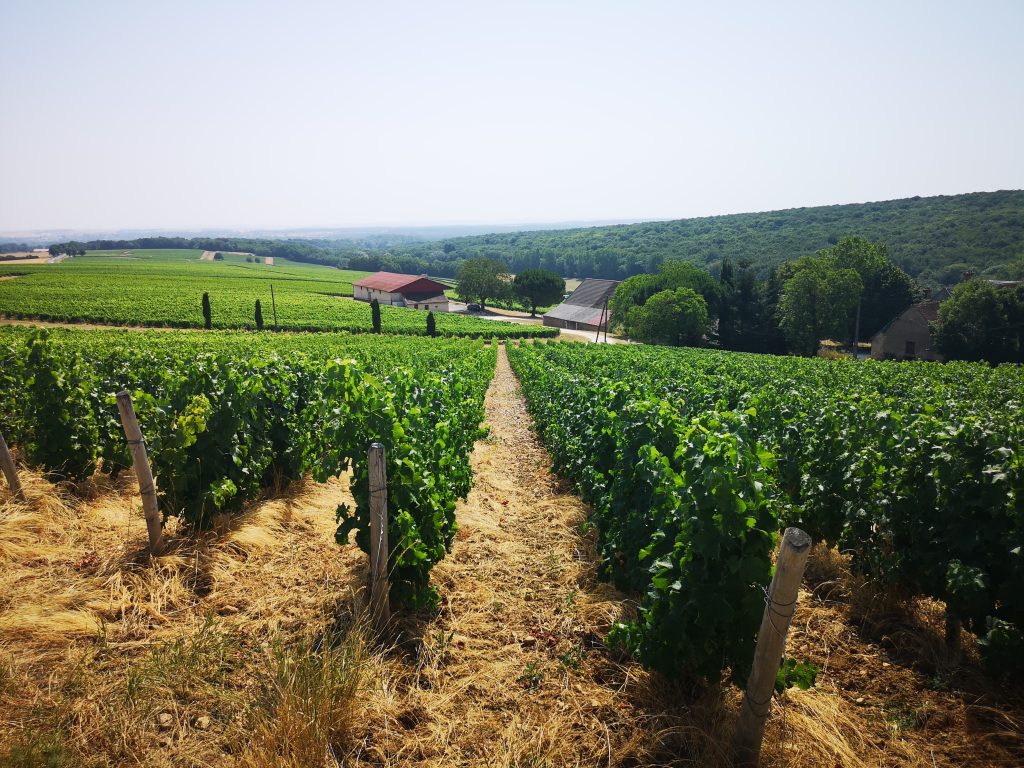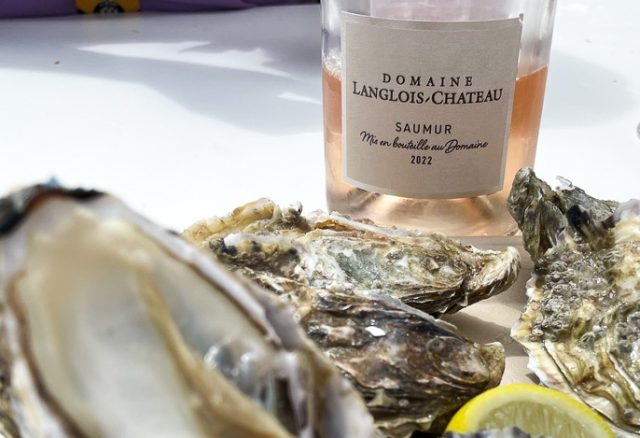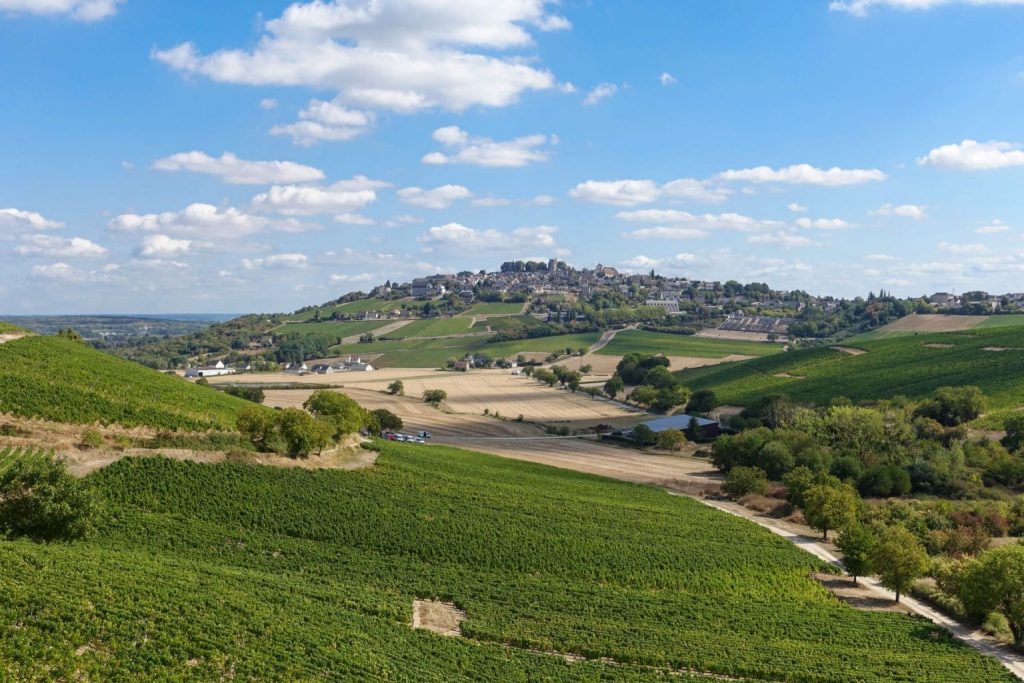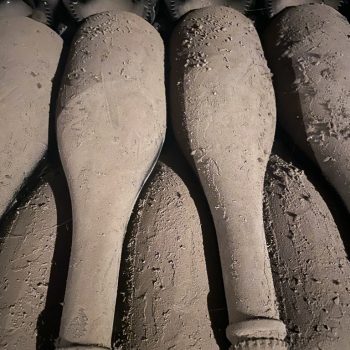This website uses cookies so that we can provide you with the best user experience possible. Cookie information is stored in your browser and performs functions such as recognising you when you return to our website and helping our team to understand which sections of the website you find most interesting and useful.
Saumur and Sancerre: Langlois-Chateau shifts focus
Last year’s acquisition of Hubert Brochard made Bollinger-owned Loire Valley winery Langlois-Chateau a serious player in Sancerre. Now that deal has prompted a refocusing of the business – prioritising Crémant de Loire and Sancerre – and a change of name. Richard Woodard reports.

It has to be one of the more confusing winery names. “We always have people saying to us: ‘Ah, you are Château Langlois?’ And we say: ‘No, we’re not…’” You can perhaps forgive the weary tone from François-Régis Fougeroux, CEO of Langlois-Chateau. To set the record straight, the name derives from the couple who took over the business back in 1912: Edouard Langlois and Jeanne Chateau. It’s Chateau, not château.
Still, Fougeroux won’t have to explain the distinction for much longer. At the end of this year, Langlois-Chateau will become simply Langlois, as part of a drive to give the business a sharper focus on its key activities: making wine in Saumur (chiefly Crémant) and in Sancerre. There’s a neatness to the timing of the change, coming as it does 50 years after the company was acquired by the Bollinger Group in 1973.
The move has been prompted by last year’s acquisition of Hubert Brochard in Sancerre. That deal made Langlois a serious force in the appellation – elevating it into the top five producers – thanks to Brochard’s 60 hectares of vineyard. Fifty hectares are located in Sancerre in a range of locations and terroirs, 5ha in Pouilly-Fumé and 5ha classified IGP Val de Loire.
Langlois has been active in Sancerre for nearly 40 years – it has produced wine at Château Fontaine-Audon since 1986, and added another Sancerre domaine, Château de Thauvenay, in 2017. But these were smaller properties: Fontaine-Audon 6ha originally, now 15ha; de Thauvenay 18ha. Hubert Brochard brings critical mass.

“Our vision is to invest a lot in Sancerre,” explains Fougeroux, Langlois CEO since 2008. “When we just had Fontaine-Audon, we didn’t have a huge engagement with the appellation. We were far away and we had only a small team.
“Now we have become one of the key players in Sancerre … With the three domaines we now have – Château Fontaine-Audon, Château de Thauvenay and Hubert Brochard – it changes a little bit our vision of the way we have to work with the Langlois-Chateau wines.”
Beyond the change of name, the company is abandoning its négociant activities, which included Muscadet, Pouilly-Fumé, Sancerre Rouge, St Nicolas-de-Bourgeuil, Chinon and Coteaux du Layon. The volumes, however, were insignificant – less than 50,000 bottles out of a company total of 1.3 million, says Fougeroux.
The new plan for Langlois is centred on Crémant de Loire and Sancerre, with a little still wine from the company’s Saumur vineyards – both dry and sweet – to be sold from the winery boutique and in a few selected markets. Outside Sancerre, Langlois has 51ha of vineyards in Saumur, and 11ha in Saumur-Champigny.

“We have decided to be really more focused in the way we present the Langlois-Chateau wines,” says Fougeroux. “Our perception to the consumer was not clear enough. With this, I think we will have more focus on the two main parts of the Loire.
“Our vision is to be refocused on Crémant de Loire, and to keep a few high-quality vineyards focused on Chenin Blanc and Cabernet Franc. We have at least 50% Chenin Blanc in our blends, so Chenin Blanc is clearly the identity of our Crémant, and it was important to keep this identity.”
Langlois’ Crémant emphasises value over volume – the house claims to be the smallest sparkling wine producer in Saumur, and its wines spend a minimum of two years on the lees. The consequent higher pricing keeps them out of the margin-eroding, cut-throat French supermarkets.
Fougeroux sees clear opportunities for Crémant around the world, and credits the Prosecco boom for helping to democratise sparkling wine. “That’s quite good for us because it drives consumers to look to drink sparkling wine outside Champagne,” he says.
“We have this kind of consumer who wants to drink a true, complex, elegant product outside of Champagne. That’s the card we really want to play, and there’s definitely more space in that market now.”

In Loire Valley terms, Langlois is unusually cosmopolitan. Only 26% of the region’s wines are exported, Fougeroux says, whereas for Langlois, the figure is close to 80%, covering 55 markets. For Crémant, the most significant are Sweden (via the Systembolaget monopoly), the UK, Germany and the US; for Sancerre, the US, UK and a number of others (Belgium and Japan are highlights).
“Our vision is not to extend the number of countries, but to be more focused on Crémant and Sancerre,” says Fougeroux. “We want to grow in terms of quality and perception, and vision for the two brands Langlois and Brochard.”
Two brands, because the Langlois name will no longer be directly associated with Sancerre. The company’s combined domaines in the appellation will be consolidated under the Hubert Brochard name, with a new, gravity-fed winery to be built at Brochard’s Chavignol base in time for the 2024 harvest.
Wines will still be made under the Fontaine-Audon and de Thauvenay names, supplemented by Brochard’s range of Sancerre bottlings – including a to-be-expanded set of parcellaire wines from “crazy” blocks, says Fougeroux – and Brochard’s Pouilly-Fumé, plus Sancerre Rosé and Sancerre Rouge from 10ha of Pinot Noir.
Oenologist Anne-Sophie Brochard stays on, joined by a new head winemaker, Chilean Rodrigo Zamorano, formerly with Caliterra, who joined Langlois/Brochard at the end of last year. Mathieu Franchini, previously in charge of the Fontaine-Audon and de Thauvenay vineyards, completes what Fougeroux calls a “nice team, really engaged to create a high-quality brand in Sancerre”.
That new team will aim to create wines that express the diverse terroir of Sancerre, from Fontaine-Audon’s flint-rich soils and chiselled elegance in the north of the appellation; to de Thauvenay’s expressive Sauvignons from chalk/clay in the south; and Brochard’s power and complexity from its base on the Chavignol coteau.
At the time of writing, the quality of the 2023 growing season hangs in the balance, with a good crop coming under disease pressure thanks to untimely rain and humidity, and the harvest likely to begin – once again – before the end of August.
Fougeroux, however, remains optimistic – about 2023, and about growing conditions in the Loire more generally. “Our harvest used to be six weeks from mid-September to the end of October,” he recalls. “Now it’s August, and the harvest is much faster, with longer days, and more complicated to manage.
“But it used to be that every three years there were green flavours in Cabernet Franc. Now we have a good balance and we can pick at the right maturity. In the past, the weather managed the maturity – now, we do.”
The wines of Langlois-Chateau are imported into the UK by Mentzendorff.
Related news
A 'challenging yet surprising' vintage for Centre-Loire in 2024

